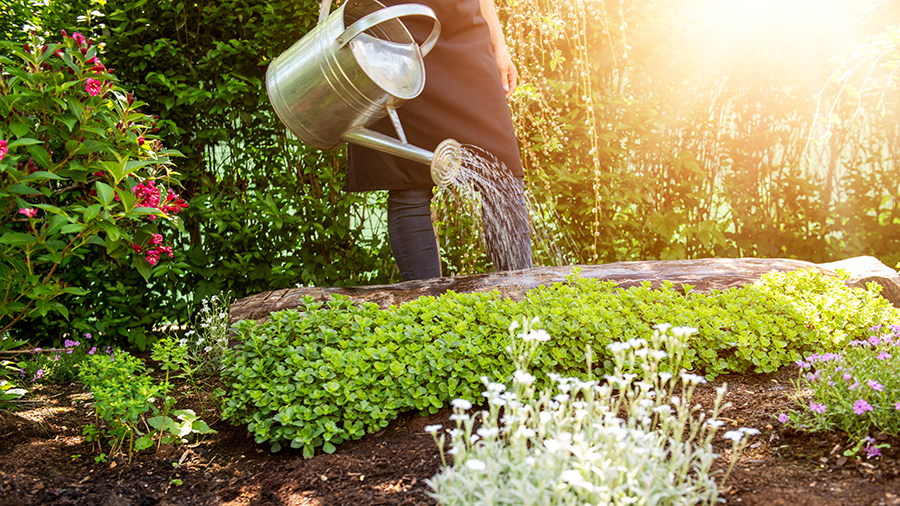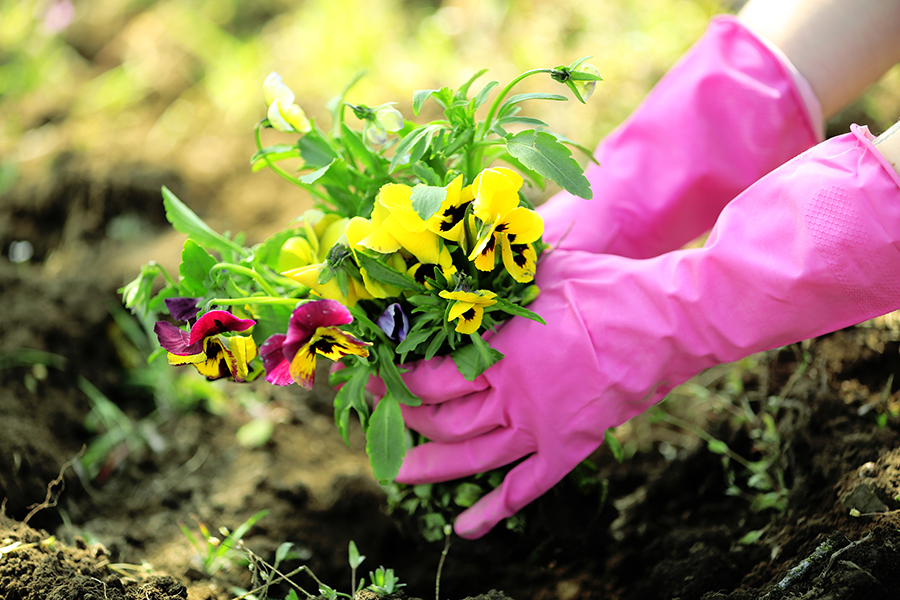Gardening is an American pastime …where attractive places to play, relax and entertain are created. Whether it’s early spring or mid-summer with seasonably hot and humid weather, when the hanging baskets, containers, and beds are bursting in full-color bloom, there are still many garden projects and chores to attend to. Gardner’s Challenge is to avoid becoming injured due to overly optimistic plans and great expectations for their “weekend gardener warrior” projects.

A Few Tips to Avoid Garden Injuries
First, be practical when planning your planting, weeding, mulching, and watering schedules. Plan the work over a few days or weeks if needed. Wear comfortable clothes and sturdy shoes. Approach your gardening like a workout session — Stretch for 10 minutes first, especially standing backbends since gardening is a lot of forward bending. Then alternate light activities with heavier ones. Make time for periodic breaks throughout your day, hydrate, move, and stretch. Be sure to cool down for 10 to 15 minutes. And don’t forget to wear appropriate gardening gloves, a hat, and eyewear if needed.
Next, while gardening, do not remain in a sustained position for a long period of time because you can stress your lower back and not even realize it. Recently, someone in my yoga class, who is extremely flexible, told me she sat cross-legged while weeding for thirty minutes and “threw out” her back. Low back pain, #LBP, is a common injury for gardeners.
Use proper body mechanics, especially when picking up heavy items like mulch or garden soil. Prevent upper extremity and back injuries by distributing the weight, using your legs to lift, and keeping the load close to your body when lifting. Do not bend at the waist. Ideally, a person should change position every five minutes. When squatting, bend your knees a little more than you think you need. If kneeling on both knees you can change to a single knee for variation. Don’t sit back on your knees. Sitting back on your knees stresses knee joints and requires you to use your hands and wrists to stabilize. It also requires your hands and wrists to bear your weight while shifting from kneeling to standing. Consider using a garden stool or bench. Avoid twisting — and turn your whole body in the direction you are placing something.
Finally, do not overuse your dominant arm. Constant repetition of one movement or motion over a long period of time can lead to overuse and cause pain in your hands and arms. Try to minimize periods of sustained repetitive motions. Alternate weed pulling, digging and carrying tools with both arms. Consider using a wagon or wheelbarrow to transport heavy loads like soil, mulch, tools, and supplies.

Gardeners should:
- Stand up and walk around every fifteen minutes and do some standing backbends.
- Use good body mechanics.
- Drink plenty of fluids, especially when working out in the heat.
- Take a break during the warmest time of the day.
- Stand back, admire, and enjoy the results and beauty of all their hard work.
In the event of a garden injury, consult with medical professionals and seek physical therapy treatment for your injury.
Wendy Webb Schoenewald, PT, OCS,
WWS Physical Therapy and Vestibular Rehabilitation
Doylestown, PA
215-489-3234

Leave a Reply